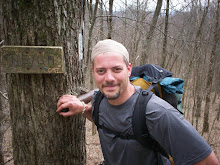
On March 25th, 2009, legislation to adopt the trail as the 9th scenic trail in the country was passed by the House Of Representatives as part of a package of environment and land protection bills. Chris Dodd, Democrat Senator from CT, along with fellow Democrat Congressman Chris Murphy, were both instrumental in pushing for the Triple M Trail's inclusion as a National Scenic Trail. "The MMM Trail provides countless hours of recreation and relaxation to the people of Connecticut," spoke Dodd. "Today, we move one step closer to gaining access to federal resources for the protection and preservation of this precious national treasure." Congressman Murphy also added his thoughts, "This bill will give the trail access to grants and resources to help in its maintenance and preservation, all while maintaining its cooperatively-managed character."
The bill, known as the New England National Scenic Trail Designation Act, was included in a collection of more than 160 public lands bills, also known as the Omnibus Public Land Management Act. The bills which pass will be protected "against increasing pressures from residential subdivision growth," as quoted on Senator Dodd's website.
The Triple M Trail consists of the Metacomet & Mattabesett Trails in Connecticut & the Metacomet-Monadnock Trail in Massachusetts. Depending on the source you get your info from, the entire trail is noted as being anywhere from 190-220 miles long. The length known for each of the trails follows:
- Metacomet Trail.......................51 miles.
- Mattabesett Trail......................50 miles.
- Metacomet-Monadnock Trail...114 miles.
At any rate, this is wonderful news to all who've enjoyed hiking any part of these trails in the past. Yet, as with any bill that receives support, there remain others who aren't happy with the legislation. This following excerpt is from the recorder.com:
"But Cinda H. Jones, president of Amherst-based Cowls Sawmill and Land Co., called the measure "a colossal waste of taxpayer money" and said that rather than a boon, attracting hikers to the trail system would prove "an economic drain" to towns that might be called on to provide rescue services."
Apparently, 8 of the 100 miles of the MMM Trail in Massachusetts are on Cowls' land. Even with moving the trail eastward onto Quabbin Reservoir property, avoiding Cowls' property, Jones argues that the connecting trails on her property are still affected and barr Cowls from future development.
My argument for Ms. Jones is this: do a study of the 
Nice job on the parts of every politician, journalist, trail-builder, trail-maintainer, hiker & everyone who's been a supporter of this bill being passed! Yes, we need more trails protected from encroachment of builders & corporate America. Congrats to all who've had a hand in this effort! Here's a short clip of Rep. Murphy speaking on the Triple M Trail.
For more info regarding the Triple M Trail & other sources, check out the links below.
~The Pilgrim.







